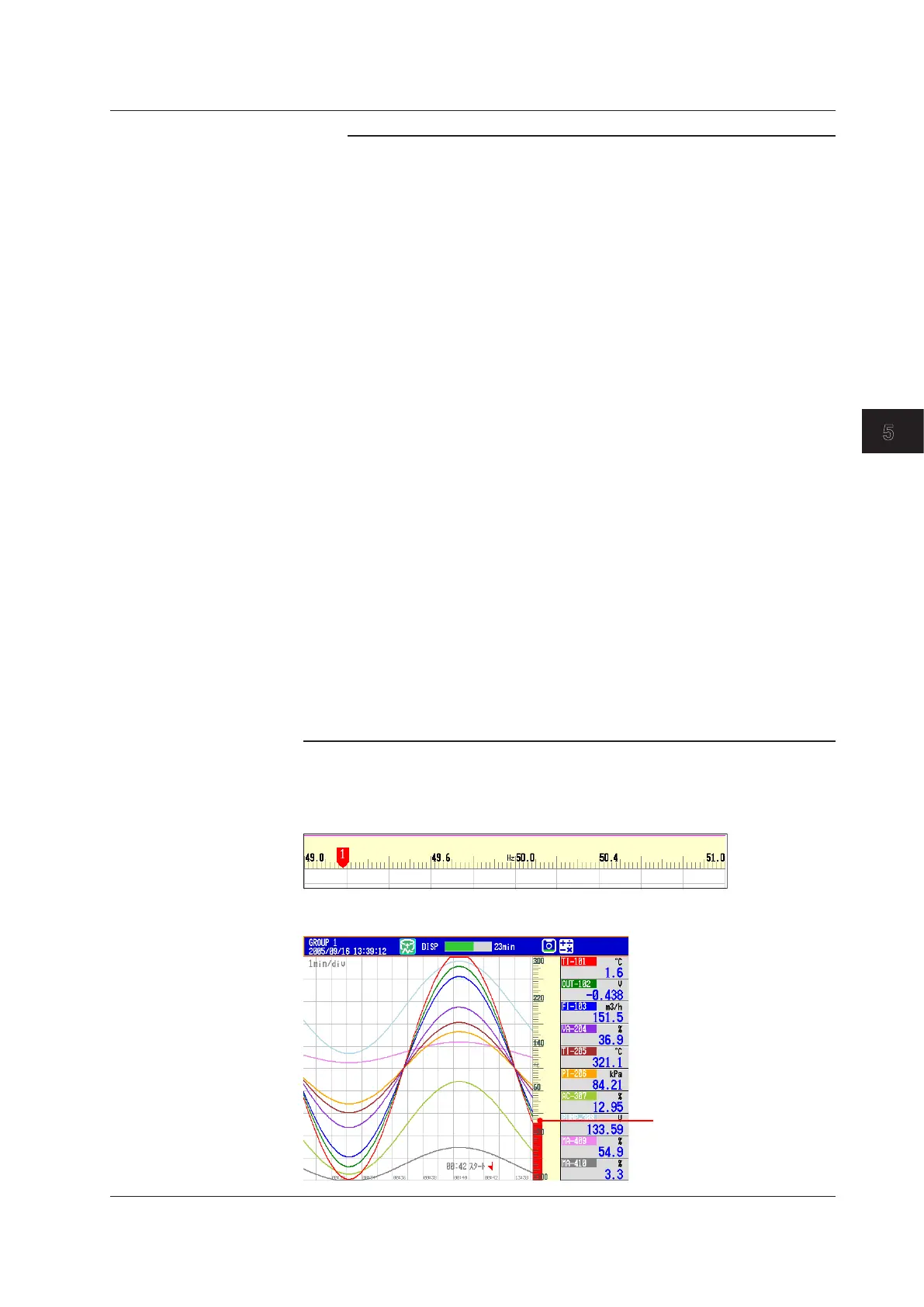5-15
IM 04L42B01-01E
Operations for Changing the Displayed Contents
5
Note
• Ifthescalesofmultiplechannelsaresettothesameposition,thescaleofthechannel
assigned first to the group is displayed.
Example: If the order of assignment of a group is 003.002.001, and the scale display
position of all channels is set to 1, the scale of channel 3 is displayed at display position 1.
• Evenifsomeofthescaledisplaypositionsareskipped,thescaleispackedtowardsdisplay
position 1.
Example: Suppose the assignment of channels to a group is 001.002.003, and the display
positions of the scales are set to 1, 3, and 6, respectively. The scales are actually displayed
at positions 1, 2, and 3, respectively.
• Thescaleisdividedinto4to12sectionsbythemainscalemarks.Thesectionbetween
the main scale marks is divided into 5 or 10 subsections by medium and small scale marks.
However, small scale marks are not displayed in the following cases.
• Whentheresolutionoftheinputrangeissmallerthanthetotalnumberofsmallscale
marks.
• Whenzonedisplayisused.
• Whenpartialexpandeddisplayisused(numbersaredisplayedattheendsofthescale
and at the boundary position).
• Thescalevaluesaredisplayedaccordingtothefollowingrules.
• Ifthenumberofscaledivisionsis4to7fortheverticaltrenddisplay,valuesare
displayed at all main scale marks. If the number of scale divisions is greater, the values
are displayed at every other main scale marks.
• Scaleupperandlowerlimitsaredisplayedattheendsofthescale.
• Scalevaluesaredisplayedupto3digitsexcludingtheminussign.However,ifthe
integer part of values at the ends of the scale is both 1 digit or the integer part is zero, 2
digits are displayed.
Example: If the scale is –0.05 to 0.50, the lower limit is “–0.0” and the upper limit is “0.5.”
• Iftheintegerpartofeitherendofthescaleis2or3digits,thefractionalpartistruncated.
Example: If the scale is 0.1 to 100.0, the lower limit is “0” and the upper limit is “100.”
• Iftheintegerpartofeitherendofthescaleis4ormoredigits,thevalueisdisplayed
using a 3-digit mantissa and exponent like “×10” or “×10
2
”.
Example: If the scale is 10 to 2000, the lower limit is “1” and the upper limit is “200 × 10”.
• Theunitisdisplayednearthecenterofthescale.Ifpartialexpandeddisplayisused,
the display position is offset from the center. For the vertical trend display, the number of
characters that can be displayed is up to six. For the horizontal trend display, the number of
characters that can be displayed is up to four.
• Trend>Scale>Digit
Fine: For example, if the scale range is “49.0 to 51.0” and you select “Normal,” the
scale values are displayed using 2 digits (“49” for example, see Note above). If you
select “Fine,” the scale values are displayed using 3 digits as shown below.
• Trend>Scale>Value indicator
The current value is displayed as a mark or a bar graph.
5.7DisplayingaScaleontheTrendDisplay

